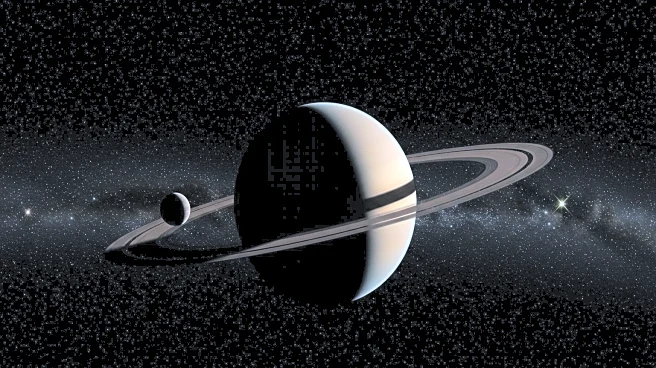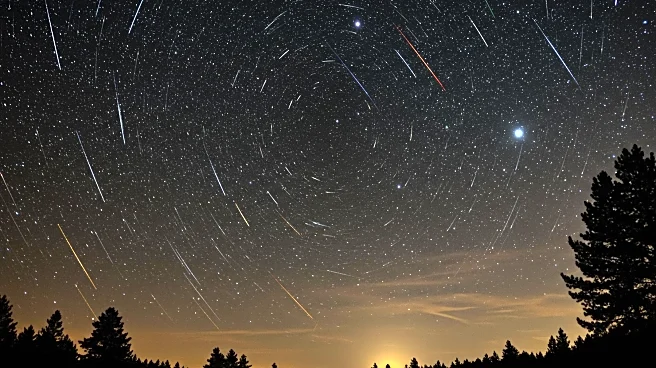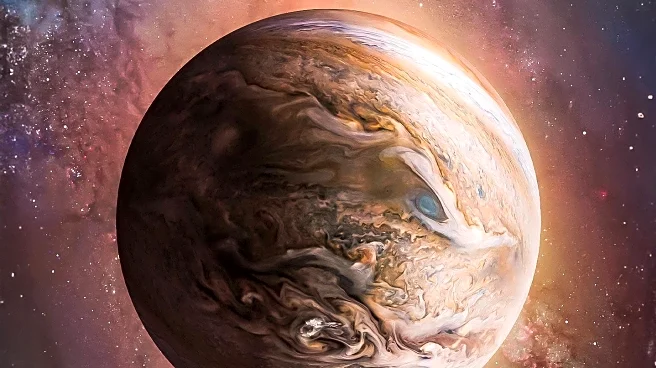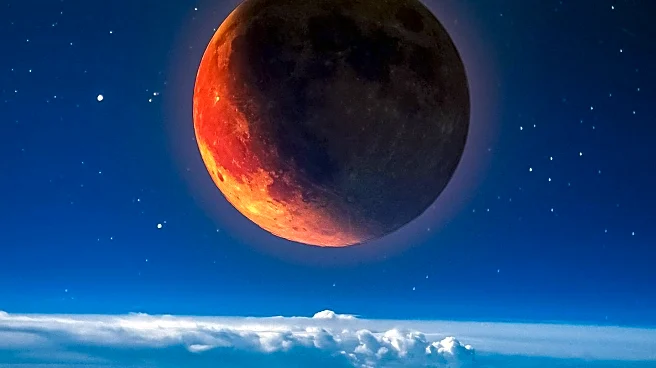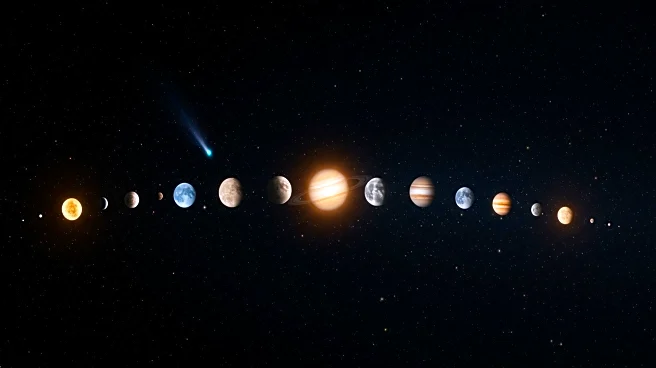What is the story about?
What's Happening?
On August 19, a rare astronomical event will occur as Titan, Saturn's largest moon, casts its shadow across the planet's surface. This phenomenon, known as a shadow transit, happens only during specific alignments every 15 years when Saturn's rings are edge-on with Earth. The transit will begin at 1:52 a.m. ET and last for over four hours. During this time, Saturn will be approximately 807 million miles from Earth, making the event invisible to the naked eye or binoculars. However, an 8-inch telescope with 200x magnification can provide a clear view of Titan's shadow on Saturn, according to Joe Rao, an instructor at the Hayden Planetarium. Smaller telescopes may also capture the event, though atmospheric conditions could pose challenges.
Why It's Important?
This shadow transit is significant for both amateur and professional astronomers as it provides a rare opportunity to observe the dynamics of Saturn's moons and rings. Such events contribute to the understanding of celestial mechanics and the gravitational interactions between Saturn and its moons. For the public, it offers a chance to engage with astronomy and appreciate the complexities of our solar system. The event also highlights the importance of telescopic technology in making distant celestial phenomena accessible to observers on Earth.
What's Next?
Following the August 19 transit, additional shadow transits will occur on September 4 and September 20, with the last one on October 6. After these dates, the next opportunity to witness a similar event will not occur until the mid-2040s, when the alignment of Saturn's rings and Titan's orbit allows for another series of transits. This long interval underscores the rarity of such events and the importance of seizing the opportunity to observe them when they occur.
AI Generated Content
Do you find this article useful?
